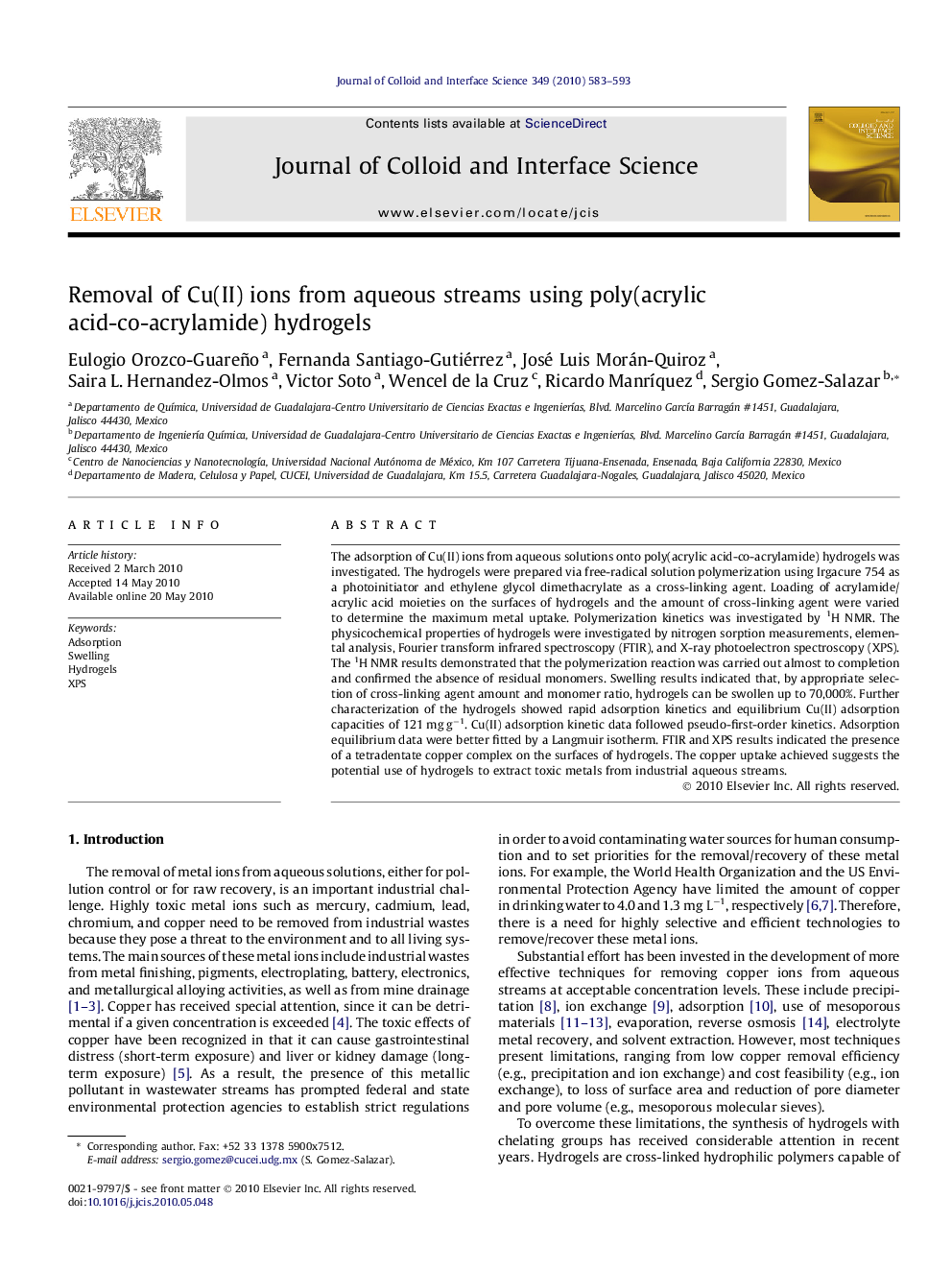| کد مقاله | کد نشریه | سال انتشار | مقاله انگلیسی | نسخه تمام متن |
|---|---|---|---|---|
| 609346 | 880621 | 2010 | 11 صفحه PDF | دانلود رایگان |

The adsorption of Cu(II) ions from aqueous solutions onto poly(acrylic acid-co-acrylamide) hydrogels was investigated. The hydrogels were prepared via free-radical solution polymerization using Irgacure 754 as a photoinitiator and ethylene glycol dimethacrylate as a cross-linking agent. Loading of acrylamide/acrylic acid moieties on the surfaces of hydrogels and the amount of cross-linking agent were varied to determine the maximum metal uptake. Polymerization kinetics was investigated by 1H NMR. The physicochemical properties of hydrogels were investigated by nitrogen sorption measurements, elemental analysis, Fourier transform infrared spectroscopy (FTIR), and X-ray photoelectron spectroscopy (XPS). The 1H NMR results demonstrated that the polymerization reaction was carried out almost to completion and confirmed the absence of residual monomers. Swelling results indicated that, by appropriate selection of cross-linking agent amount and monomer ratio, hydrogels can be swollen up to 70,000%. Further characterization of the hydrogels showed rapid adsorption kinetics and equilibrium Cu(II) adsorption capacities of 121 mg g−1. Cu(II) adsorption kinetic data followed pseudo-first-order kinetics. Adsorption equilibrium data were better fitted by a Langmuir isotherm. FTIR and XPS results indicated the presence of a tetradentate copper complex on the surfaces of hydrogels. The copper uptake achieved suggests the potential use of hydrogels to extract toxic metals from industrial aqueous streams.
Cu2+ ion removal from aqueous streams by poly(acrylic acid-co-acrylamide) hydrogels is discussed. The monomer ratio has a significant effect on Cu2+ removal. XPS and FTIR results suggest the formation of a tetradentate copper complex.Figure optionsDownload high-quality image (104 K)Download as PowerPoint slide
Journal: Journal of Colloid and Interface Science - Volume 349, Issue 2, 15 September 2010, Pages 583–593